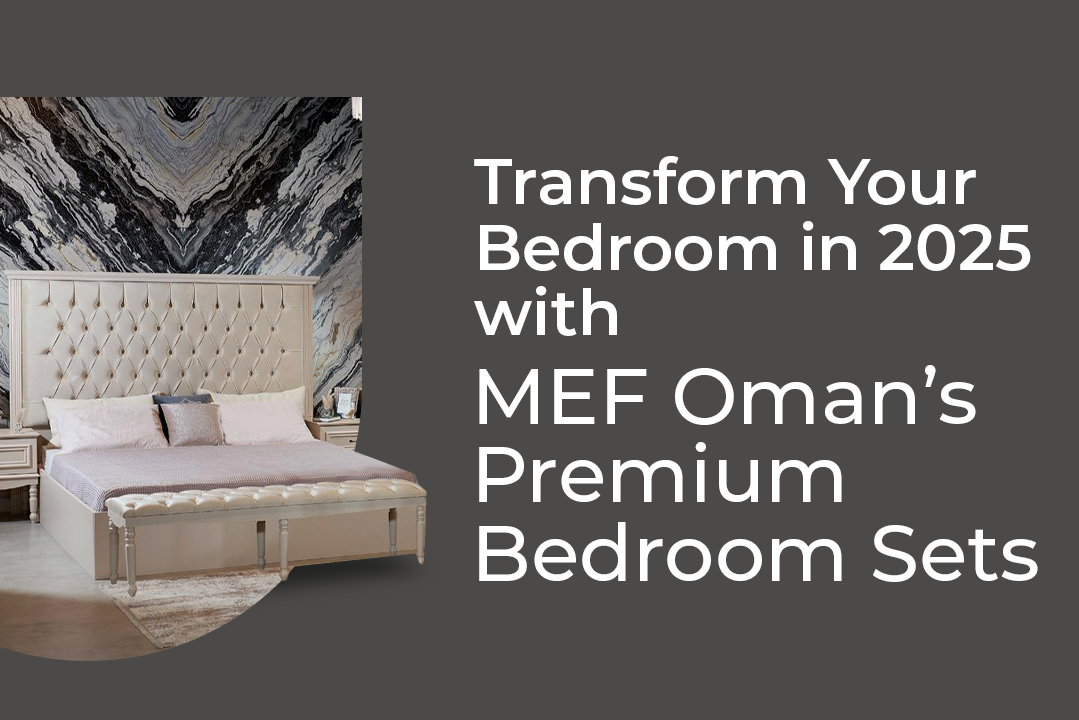Home decor transforms houses into homes, reflecting personal style while creating environments that inspire, comfort, and serve daily life. The art of decorating encompasses far more than simply arranging furniture or choosing paint colors—it involves understanding how different elements work together to create cohesive, beautiful spaces that enhance your quality of life and express your unique personality.
Whether you’re starting from scratch in a new home, refreshing tired spaces, or simply looking to refine your decorating skills, understanding fundamental design principles and current trends helps you make confident decisions that result in spaces you’ll love for years to come. Great decor balances aesthetics with functionality, creating rooms that not only look stunning but also support your lifestyle and daily routines.
The journey of decorating your home should be enjoyable and rewarding, not overwhelming or stressful. With proper guidance and a clear understanding of your personal style preferences, you can create spaces that feel authentically yours while incorporating timeless design principles that ensure lasting appeal.
Understanding Your Personal Decorating Style
Discovering your personal decorating style serves as the foundation for all decorating decisions, providing direction and cohesion throughout your home. Your style preferences emerge from various influences including childhood memories, travel experiences, lifestyle needs, and natural aesthetic inclinations. Take time to identify what truly appeals to you rather than following trends that might not reflect your authentic preferences.
Create inspiration collections through magazines, Pinterest boards, or simple photo collections that capture rooms, colors, furniture pieces, and details that resonate with you. Look for patterns in your selections—do you gravitate toward clean, minimal spaces or cozy, layered environments? Are you drawn to bold colors or subtle neutrals? These patterns reveal your natural style preferences.
Consider your lifestyle when defining your decorating style. Busy families might prefer durable, low-maintenance decor approaches, while empty nesters might enjoy more delicate or formal styling. Your entertaining preferences, work-from-home needs, and daily routines all influence which decorating choices will serve you best.
Don’t feel pressured to fit into a single defined style category. Many successful decorating approaches blend elements from different styles, creating personalized looks that reflect individual tastes and needs. The key lies in maintaining some consistency in color palette, scale, or material choices to create cohesion throughout your space.
Color Theory and Palette Selection
Color serves as one of the most powerful tools in home decor, influencing mood, perceived space size, and overall atmosphere. Understanding basic color theory helps you make confident color choices that create the ambiance you desire while ensuring different rooms flow together harmoniously.
The color wheel provides a foundation for understanding color relationships and creating pleasing combinations. Complementary colors (opposites on the wheel) create dynamic, energetic combinations, while analogous colors (neighbors on the wheel) produce more peaceful, harmonious feelings. Monochromatic schemes using different shades of the same color create sophisticated, calming environments.
Consider the psychological effects of different colors when planning room palettes. Warm colors like reds, oranges, and yellows create energy and intimacy, making them excellent choices for social spaces like living rooms and dining areas. Cool colors such as blues, greens, and purples promote relaxation and tranquility, working well in bedrooms and bathrooms.
Neutral colors provide versatile foundations that allow you to experiment with accent colors through accessories, artwork, and textiles. Beiges, grays, whites, and soft earth tones create timeless backdrops that adapt to changing trends and seasonal decorating updates. Layer different shades of neutrals to create depth and visual interest without overwhelming spaces.
Lighting: The Foundation of Great Decor
Lighting dramatically affects how colors appear, how spaces feel, and how successfully your decorating efforts come together. Natural light provides the most flattering illumination, so maximize daylight through window treatments that can be adjusted throughout the day while maintaining privacy when needed.
Layer different types of artificial lighting to create flexible, functional illumination that serves various activities and moods. Ambient lighting provides overall room illumination, task lighting supports specific activities like reading or cooking, and accent lighting highlights architectural features or decorative elements.
Consider the color temperature of light bulbs, as this significantly affects how your decor appears. Warm white bulbs (2700K-3000K) create cozy, intimate atmospheres that complement warm color schemes, while cool white bulbs (3500K-4100K) provide crisp, energizing light that works well with contemporary decor and cool color palettes.
Install dimmer switches wherever possible to adjust lighting levels throughout different times of day and various activities. Bright lighting works well for cleaning and detailed tasks, while dimmed lighting creates relaxation and intimacy for entertaining or evening routines.
Furniture Selection and Arrangement
Furniture serves as the foundation of room functionality and significantly impacts overall decorating success. Choose pieces that appropriately scale to your room size—oversized furniture overwhelms small spaces, while tiny furniture appears lost in large rooms. Measure spaces carefully and create floor plans before purchasing major pieces.
Consider traffic flow when arranging furniture, ensuring clear pathways between rooms and around furniture groupings. Leave adequate space for drawer and door operation, and consider how people will move through spaces during daily activities and when entertaining guests.
Create conversation areas by arranging seating pieces to face each other rather than lining them against walls. This arrangement promotes interaction and creates more intimate, welcoming atmospheres. Use area rugs to define seating groups and anchor furniture arrangements.
Mix furniture heights, shapes, and styles to create visual interest while maintaining overall cohesion through consistent color palettes or material choices. Combine curved and angular pieces, high and low profiles, and different textures to add depth and sophistication to your decorating scheme.
The Art of Layering Textures and Patterns
Texture adds depth, warmth, and visual interest to rooms, preventing spaces from appearing flat or sterile. Layer different textures through furniture, textiles, accessories, and architectural elements to create rich, inviting environments that engage multiple senses.
Combine smooth and rough textures for dynamic contrast—pair sleek leather furniture with nubby wool throws, or contrast glossy ceramic accessories with rustic wooden elements. Natural materials like wood, stone, and woven fibers add organic warmth that balances more manufactured materials.
When incorporating patterns, start with one dominant pattern and add smaller-scale patterns in coordinating colors. Mix pattern types—florals with geometrics, stripes with plaids—while maintaining consistent color relationships. Use solid colors to provide visual rest between patterned elements.
Vary pattern scales to create successful combinations. Large-scale patterns work well on major pieces like sofas or area rugs, medium patterns suit accent chairs or window treatments, and small patterns add detail through pillows or accessories. This variety creates visual hierarchy and prevents pattern competition.
Wall Treatments and Architectural Elements
Walls provide significant decorating opportunities beyond simple paint color. Consider wallpaper, wood paneling, tile, or decorative molding to add architectural interest and personality to your spaces. These treatments can define specific areas, create focal points, or add texture and pattern.
Artwork serves as jewelry for your walls, adding personality, color, and visual interest. Create gallery walls by grouping multiple pieces, or make bold statements with single large artworks. Consider the scale of artwork relative to furniture pieces—artwork should relate proportionally to the furniture beneath it.
Mirrors serve dual purposes in home decor, providing functional reflection while adding light and visual space to rooms. Place mirrors strategically to reflect attractive views, amplify natural light, or create the illusion of larger spaces. Large mirrors can serve as artwork while providing practical benefits.
Window treatments significantly impact room appearance and functionality. Choose treatments that complement your decorating style while providing appropriate light control and privacy. Layer different types of treatments—blinds with curtains, or shutters with valances—for maximum flexibility and visual interest.
Accessory Selection and Styling
Accessories personalize spaces and provide opportunities to incorporate color, texture, and meaningful objects that reflect your interests and experiences. However, successful accessory styling requires restraint and thoughtful curation rather than displaying everything you own.
Group accessories in odd numbers and vary heights, shapes, and textures within groupings. This creates more dynamic, visually pleasing arrangements than evenly spaced, uniform displays. Leave some negative space around groupings to prevent cluttered appearances.
Incorporate natural elements like plants, flowers, or organic materials to add life and freshness to your decor. Plants improve air quality while providing color and texture that complement any decorating style. Choose plants appropriate for your room’s light conditions and your maintenance preferences.
Rotate accessories seasonally to keep your decor feeling fresh without major expense. Store some items away and bring out others to create different looks throughout the year. This approach also prevents your spaces from becoming stagnant or overly familiar.
Room-by-Room Decorating Strategies
Each room in your home serves different functions and requires specific decorating considerations while maintaining overall home cohesion. Living rooms need to balance comfort with style, accommodating both daily family life and entertaining guests. Focus on durable, comfortable seating arranged to promote conversation.
Bedrooms should prioritize rest and relaxation through calming color schemes, comfortable furnishings, and minimal clutter. Layer lighting options for different activities like reading, dressing, and relaxation. Invest in quality bedding and window treatments that support good sleep.
Kitchens combine function with style, requiring durable surfaces that can withstand heavy use while contributing to your home’s overall aesthetic. Choose backsplashes, hardware, and accessories that coordinate with your decorating style while prioritizing easy maintenance.
Bathrooms offer opportunities for luxury and spa-like experiences through careful material selection, lighting, and accessory choices. Focus on creating clean, serene environments that feel fresh and inviting while incorporating storage solutions that maintain organized appearances.
Seasonal Decorating and Flexibility
Seasonal decorating allows you to refresh your spaces throughout the year without major expense or permanent changes. Develop systems for rotating accessories, textiles, and accent pieces that reflect different seasons while maintaining your overall decorating scheme.
Spring decorating might incorporate fresh flowers, lighter textiles, and brighter colors that celebrate renewal and growth. Summer updates could include natural materials, coastal influences, and cooling color palettes that create comfortable environments during warmer months.
Fall decorating often features richer colors, cozy textures, and natural elements that reflect the harvest season. Winter updates might emphasize warmth through heavier textiles, intimate lighting, and accessories that create cozy retreats from cold weather.
Maintain flexibility in your decorating approach by choosing neutral foundations that can accommodate seasonal changes through easily updated accessories, artwork, and textiles. This strategy allows for regular refreshing without constant major redecorating expenses.
Budget-Friendly Decorating Solutions
Beautiful home decor doesn’t require unlimited budgets—creativity, patience, and strategic planning can achieve stunning results at reasonable costs. Focus your spending on key pieces that provide the most visual impact while finding budget-friendly solutions for accessories and accent pieces.
DIY projects offer opportunities to create custom decor elements while controlling costs. Simple projects like painting furniture, creating artwork, or sewing curtains can significantly impact your decor while expressing personal creativity. Start with small projects to build skills and confidence.
Shop secondhand stores, estate sales, and online marketplaces for unique pieces at reasonable prices. Many vintage and antique items offer superior quality compared to contemporary mass-produced alternatives. Look for solid wood furniture that can be refinished or pieces with good bones that need minor updates.
Rearrange existing furniture and accessories before purchasing new items. Sometimes simple rearrangement creates entirely new looks and solves decorating challenges without any expense. Experiment with different arrangements and accessory groupings to maximize your existing investments.
Technology Integration in Modern Decor
Modern homes must accommodate various technology needs while maintaining attractive, uncluttered appearances. Plan for device charging, cable management, and equipment storage during decorating planning phases rather than trying to hide technology after decorating completion.
Choose furniture pieces that incorporate technology-friendly features like built-in charging stations, cord management systems, or equipment storage. These pieces help maintain clean appearances while supporting modern lifestyle needs.
Consider how large screen televisions integrate into your decorating scheme. Wall mounting creates cleaner appearances than entertainment centers, but requires careful consideration of viewing angles and surrounding decor. Frame televisions or incorporate them into gallery walls for more seamless integration.
Smart home features like automated lighting, temperature control, and audio systems can enhance your decorating efforts while providing convenience and energy efficiency. Choose systems that integrate well with your aesthetic preferences and don’t require visible control panels or devices.
Sustainable and Eco-Friendly Decorating
Sustainable decorating practices benefit both the environment and your budget while often resulting in more unique, characterful spaces. Choose furniture and accessories made from renewable or recycled materials when possible, and prioritize quality pieces that will last for years rather than trendy items requiring frequent replacement.
Support local artisans and manufacturers to reduce transportation environmental impact while often obtaining higher quality, more unique pieces. Local sourcing also supports your community economy and often provides better customer service and customization options.
Consider the lifecycle of decorating purchases, including disposal or recycling possibilities. Choose pieces that can be donated, resold, or repurposed rather than discarded when your decorating preferences change. This approach contributes to circular economy principles while often providing better long-term value.
Incorporate plants and natural materials to improve indoor air quality while adding beauty and life to your spaces. Plants provide natural air purification while creating connections to nature that enhance wellbeing and complement any decorating style.
Common Decorating Mistakes to Avoid
Understanding common decorating pitfalls helps you make better decisions and avoid expensive mistakes that detract from your decorating success. Scale mistakes rank among the most frequent errors—choosing furniture too large or small for spaces, or accessories that don’t relate proportionally to surrounding elements.
Avoid pushing all furniture against walls, which creates disconnected, unfriendly room arrangements. Instead, pull furniture into room centers to create intimate conversation areas and better traffic flow patterns.
Don’t ignore lighting planning until after decorating completion. Adequate, attractive lighting requires advance planning and often electrical work that’s easier to complete before final decorating installation.
Resist the urge to decorate entire homes quickly. Successful decorating often takes time to evolve, allowing you to make thoughtful choices and acquire pieces you truly love rather than settling for items that are merely adequate. Room-by-room approaches often produce better results than attempting whole-house decorating simultaneously.
Creating beautiful, functional home decor requires patience, planning, and willingness to experiment with different approaches until you find what works best for your lifestyle and preferences. Focus on understanding fundamental design principles while staying true to your personal style, and remember that successful decorating is an ongoing process rather than a single project with a defined completion date.














